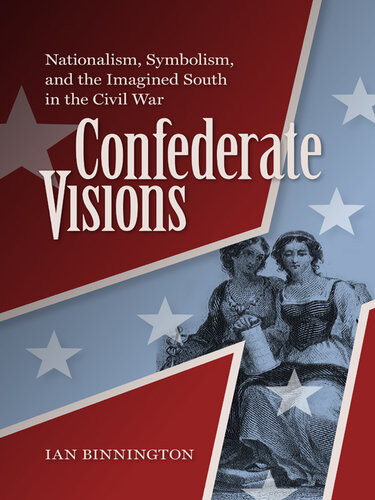

Most ebook files are in PDF format, so you can easily read them using various software such as Foxit Reader or directly on the Google Chrome browser.
Some ebook files are released by publishers in other formats such as .awz, .mobi, .epub, .fb2, etc. You may need to install specific software to read these formats on mobile/PC, such as Calibre.
Please read the tutorial at this link: https://ebookbell.com/faq
We offer FREE conversion to the popular formats you request; however, this may take some time. Therefore, right after payment, please email us, and we will try to provide the service as quickly as possible.
For some exceptional file formats or broken links (if any), please refrain from opening any disputes. Instead, email us first, and we will try to assist within a maximum of 6 hours.
EbookBell Team

5.0
70 reviewsNationalism in nineteenth-century America operated through a collection of symbols, signifiers citizens could invest with meaning and understanding. In Confederate Visions, Ian Binnington examines the roots of Confederate nationalism by analyzing some of its most important symbols: Confederate constitutions, treasury notes, wartime literature, and the role of the military in symbolizing the Confederate nation.
Nationalisms tend to construct glorified pasts, idyllic pictures of national strength, honor, and unity, based on visions of what should have been rather than what actually was. Binnington considers the ways in which the Confederacy was imagined by antebellum Southerners employing intertwined mythic concepts—the "Worthy Southron," the "Demon Yankee," the "Silent Slave"—and a sense of shared history that constituted a distinctive Confederate Americanism. The Worthy Southron, the constructed Confederate self, was imagined as a champion of liberty, counterposed to the Demon Yankee other, a fanatical abolitionist and enemy of Liberty. The Silent Slave was a companion to the vocal Confederate self, loyal and trusting, reliable and honest.
The creation of American national identity was fraught with struggle, political conflict, and bloody Civil War. Confederate Visions examines literature, newspapers and periodicals, visual imagery, and formal state documents to explore the origins and development of wartime Confederate nationalism.